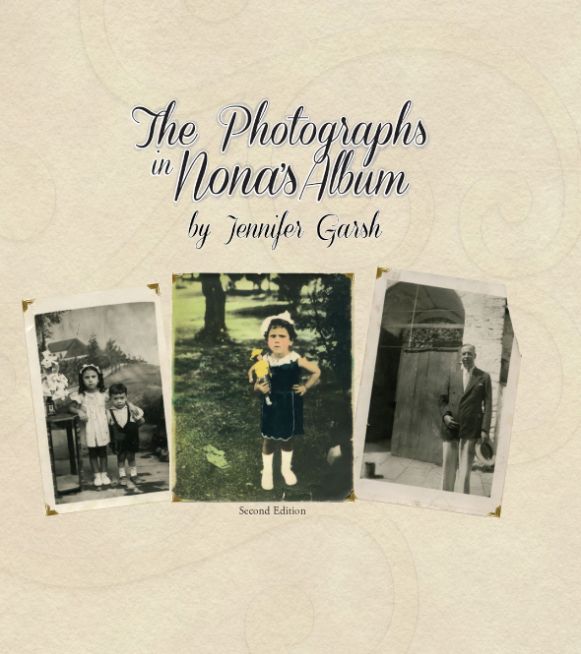
The Photographs in Nona’s Album
Sunday to Thursday: 09:00-17:00
Fridays and Holiday eves: 09:00-14:00
Yad Vashem is closed on Saturdays and all Jewish Holidays.
Entrance to the Holocaust History Museum is not permitted for children under the age of 10. Babies in strollers or carriers will not be permitted to enter.

The Photographs in Nona’s Album
The Photographs in Nona’s Album
Jennifer Garsh
The Richard Stockton College of New Jersey, 2010
36 pages
In this short but powerful book, suitable for grades 5-12, students will learn about Romaniote Jewry and in particular about the Koen family, through use of family photographs and text.
The author, Jennifer Garsh, writes about her grandmother, Stema Koen, who lived in Janina until she was five. She is referred to by her granddaughter as Nona. Through the photographs we learn about Nona’s family, and how they lived prior to World War II. A map provides the location of Janina.
At the young age of five, Nona was adopted by her Aunt Rachel and Uncle Eliezer, who lived in America, and were childless – a move which ultimately saved her life. Unfortunately, she was the only survivor of her family, as they, along with the Jewish community of Janina were deported to Auschwitz-Birkenau on March 25, 1944. Nona did not know about her adoption or about the fate of her family until she was older. Her adoptive mother had family photographs taken in pre-war Greece from which they could identify members of their family.
Here is an ideal opportunity for students to learn about the rich and vibrant culture of Romaniote Jewry, which has all but been forgotten. Visually appealing, it is easy for students to imagine how life was before the Holocaust, and also poses the difficult dilemma facing Nona’s parents in sending their five-year-old daughter to America, albeit to the safety and warmth of her aunt and uncle.
The family tree at the beginning of the book painfully illustrates and personalizes to students how one particular family was destroyed during the Holocaust. Fortunately through the photographs, the family is not forgotten.
At the end of the book there is a description of the Kehila Kedosha Janina Synagogue in Manhattan, which was built in the 1920s. There is also a museum there which students living in the New York area or beyond, can visit. The museum bears testament to a special 2,000-year-old community that had its own unique tradition and customs and was almost completely destroyed by the Nazis.
More information about the Romaniote Jews can be found on the Internet.
It is worth noting that the Greek name of the town of Ioannona has been transliterated into Yanina and is sometimes spelled Janina.

Thank you for registering to receive information from Yad Vashem.
You will receive periodic updates regarding recent events, publications and new initiatives.

"The work of Yad Vashem is critical and necessary to remind the world of the consequences of hate"
Paul Daly
#GivingTuesday
Donate to Educate Against Hate


Worldwide antisemitism is on the rise.
At Yad Vashem, we strive to make the world a better place by combating antisemitism through teacher training, international lectures and workshops and online courses.
We need you to partner with us in this vital mission to #EducateAgainstHate
The good news:
The Yad Vashem website had recently undergone a major upgrade!
The less good news:
The page you are looking for has apparently been moved.
We are therefore redirecting you to what we hope will be a useful landing page.
For any questions/clarifications/problems, please contact: webmaster@yadvashem.org.il
Press the X button to continue



